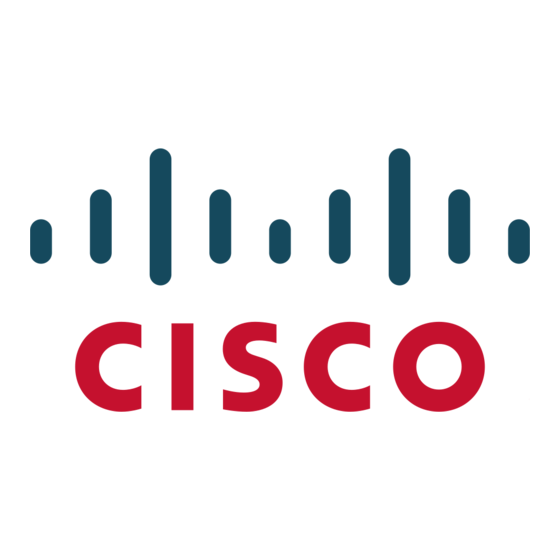Cisco 3560-48TS - Catalyst EMI Switch Datasheet - Page 6
Browse online or download pdf Datasheet for Switch Cisco 3560-48TS - Catalyst EMI Switch. Cisco 3560-48TS - Catalyst EMI Switch 23 pages. Cisco catalyst 3560-48ts: product brochure
Also for Cisco 3560-48TS - Catalyst EMI Switch: Product Bulletin (5 pages), Product Support Bulletin (6 pages), Specifications (3 pages), Product Support Bulletin (4 pages), Brochure (8 pages)

Data Sheet
Advanced QoS
The Cisco Catalyst 3560 offers superior multilayer, granular QoS features to help ensure that
network traffic is classified and prioritized, and that congestion is avoided in the best possible
manner. Configuration of QoS is greatly simplified through automatic QoS (Auto QoS), a feature
that detects Cisco IP phones and automatically configures the switch for the appropriate
classification and egress queuing. This optimizes traffic prioritization and network availability
without the challenge of a complex configuration.
The Cisco Catalyst 3560 can classify, reclassify, police, mark, queue, and schedule incoming
packets, and can queue and schedule packets at egress. Packet classification allows the network
elements to discriminate between various traffic flows and enforce policies based on Layer 2 and
Layer 3 QoS fields.
To implement QoS, the Cisco Catalyst 3560 Series Switch first identifies traffic flows or packet
groups, and classifies or reclassifies these groups using the Differentiated Services Code Point
(DSCP) field or the 802.1p Class of Service (CoS) field. Classification and reclassification can be
based on criteria as specific as the source or destination IP address, source or destination MAC
address, or the Layer 4 TCP or UDP port. At the ingress, the Cisco Catalyst 3560 also polices to
determine whether a packet is in or out of profile, marks to change the classification label, passes
through or drops out of profile packets, and queues packets based on classification. Control- and
data-plane ACLs are supported on all ports to help ensure proper treatment on a per-packet basis.
The Cisco Catalyst 3560 supports four egress queues per port, allowing the network administrator
to be more discriminating and specific in assigning priorities for the various applications on the
LAN. At egress, the switch performs scheduling and congestion control. Scheduling is an algorithm
or process that determines the order in which the queues are processed. The Cisco Catalyst 3560
Series Switch supports shaped round robin (SRR) and strict priority queuing. The SRR algorithm
helps ensure differential prioritization.
These QoS features allow network administrators to prioritize mission-critical and bandwidth-
intensive traffic, such as enterprise resource planning (ERP) (Oracle, etc.), voice (IP telephony
traffic), and computer-aided design (CAD) or computer-aided manufacturing (CAM) over less-time-
sensitive applications such as FTP or e-mail. For example, it would be highly undesirable to have a
large file download destined to one port on a wiring-closet switch and have quality implications
such as increased latency in voice traffic destined to another port on this switch. This condition is
avoided by making sure that voice traffic is properly classified and prioritized throughout the
network. Other applications, such as Web browsing, can be treated as low priority and handled on
a best-effort basis.
The Cisco Catalyst 3560 Series can perform rate limiting through its support of the Cisco
Committed Information Rate (CIR) function. Through CIR, bandwidth can be guaranteed in
increments as low as 8 kbps. Bandwidth can be allocated based on several criteria, including MAC
source address, MAC destination address, IP source address, IP destination address, and TCP or
UDP port number. Bandwidth allocation is essential when network environments require service-
level agreements or when it is necessary for the network manager to control the bandwidth given
to certain users.
© 2009 Cisco Systems, Inc. All rights reserved. This document is Cisco Public Information.
Page 6 of 22
